A designer of greeting cards and fibre art, and having sewn since childhood, Jean Rill-Alberto wanted to bring stitch into her playful and experimental growing portfolio of artwork. So, when lockdown occurred in March 2020, Jean seized the day.
Jean’s home studio in Middletown, Connecticut, USA brims with an array of papers, fabrics and colourful threads that she combines with ink, paint and coloured pencils to create collages, embroideries, jewellery, wall hangings and framed art.
Now Jean’s only challenge is which of her imaginative ideas to work on first.

Childhood influences
Jean Rill-Alberto: I grew up with my older sisters, who were always as excited as I was to make art. If I wasn’t drawing or painting, I was stitching or quilting. My mother was a seamstress, so I was always surrounded by fabrics and sewing tools. I became very fond of these and would make clothing for my dolls, stuffed toys or stitch little samplers with my embroidery threads.
I used to watch Erica Wilson, the needlework artist who was considered America’s first lady of stitchery on TV, and was smitten immediately with all of the colourful threads and interesting tools that she used. I went to her shop in New York City (NYC) and bought her embroidery hoop lap stand and beautifully coloured threads. After that, I was hooked forever. I started designing my own canvasses and doing needlepoint.

I studied at The School of Visual Arts in NYC and then worked as a graphic designer in an independent art design company. My job was to create needlepoint canvas designs, which I drew by hand as it was in the 1970s and the digital imaging age was only just beginning. I started my own greetings card design business in 2005 and I still do that today, selling my cards into shops in the US, such as Wholefoods Market. All the time, I’ve never stopped stitching: it was always something separate and very special to me.
Today, I am a mixed media and fibre artist and designer, who also creates art-to-wear jewellery.

Stitching as Meditation
When the pandemic began, I found Liz Kettle’s Stitch Meditations group on Facebook and joined. Not only was I inspired by Liz and her work, but also by the lovely pieces that others created and posted, and that encouraged me to share my work there. The Facebook group has been a wonderfully supportive community and a place to remain encouraged while keeping our hands busy doing what we love.
I received many compliments about my work which drove me on to create a series which I named my Stitch Meditation series. It consists primarily of sashiko threads on woven paper. Some are geometric circles, squares and lines, some are more organic and abstract and there are a couple of portraits and fabric collages. I’m drawn to more modernist compositions as I feel it’s a freer way to sew.
My very first stitch meditation, created at that time, was an attempt at stitching a self-portrait. I was a little nervous about doing it! As I began to work on it and finish the drawing, I felt ready to stitch. Working slowly, and stitching every strand of my hair very carefully, I finally got to a stage where I felt it was complete and I was happy with the outcome. I was very proud of it and it will always be special to me.
When I hold it, I remember how each stitch kept me calm and peaceful as the pandemic began and life seemed so uncertain. I plan to do a stitch portrait of my mom next.

Teaching myself
All my textile work is self-taught, basically through practising on my own. I constantly explore boundaries and develop my own style and that’s something that just keeps evolving.
If I see a project done by another artist with a technique that looks interesting or challenging to me, I will experiment and create my own unique piece from that inspiration. I am always browsing art books or following other artists’ work, whether it be on Instagram, Pinterest or the many magazines here in the States like What Women Create, Quilting Arts or Art Quilting Studio to name just a few.
I am inspired by artists like Paula Kovarik and Aideen Canning, who think out of the box and create contemporary, imaginative and modern design pieces. Some of my favourite books are Slow Stitch and Resilient Stitch by Claire Wellesley-Smith, Poetic Cloth by Hannah Lamb and Drawn to Stitch by Gwen Hedley.
I also visit museums when an interesting artist is exhibiting; it always inspires me to go back to my studio and start creating.


Pulling it all together
My process for most of my textile work starts with my love for pattern and design.
I am always on the hunt for fabrics with interesting designs and patterned papers, and I collect many different types, with a view to the type of composition they could work well in.
When I go to San Francisco, California I always visit Britex, a wonderful store that has beautiful fabrics and notions from all over the world. I particularly enjoy rummaging through the remnants section. There is a great fabric shop in NYC called Mood Fabrics which has a huge variety of fabrics and remnants. I also use shops on the internet like Etsy for fabrics, threads and the latest sewing accessories.
When I search for beautiful coloured threads, I’m like a painter choosing their palette; it creates such a feeling of joy and excitement in me.
When I start to compose a piece, I don’t sketch. I select my fabrics and threads and cut out different shapes to create a harmonious design. I snip pieces of fabric and paper and play around with their placement as my composition emerges before my eyes. I love stitching onto paper the most; it feels so good to pull the needle slowly through and to listen to the crisp and soothing sound it makes. It has become my form of meditation and solace these days.

I never worry about the type of stitches I am using, I simply stitch and let my senses decide in the moment. I let my imagination and feelings take me there.
I make my collages purely with stitch alone. I secure the fabric with a small piece of adhesive tape while laying out my composition, and I remove that as I stitch.
Most of my jewellery is made with repurposed materials like wood, paper and rubber. However recently I have started to make some stitched jewellery and I am working on a necklace at the moment which is created by felting onto small felt pieces, stitching them, and then adding glass beads as embellishments. They will all be strung together on a chain to finish the piece.

A million ideas
I think that my biggest challenge with my work is that, being a very visual person and an artist, I am constantly inspired and enlightened. When I’m feeling really prolific, I want to try a million different projects at once and I have to calm myself down to do just one at a time.
However, there are those days or moments where I just draw a blank and nothing comes to me or I don’t like anything I’m trying to create. When this happens, I set the work aside, leave my studio and step outside for an adventure or two. When I come back to it in a few hours or a day or so, I can look at it with a whole new perspective and continue creating the piece. I think this happens to most creatives but I would advise you not to destroy your work, just put it aside and don’t be discouraged. I promise that the next time you go back to it, you will know exactly what to do with it and make it into something beautiful.


I find that keeping my studio organised and making it a tranquil place to work is very important and makes a huge difference. Having all of my fabric, threads and tools right there with me creates harmony in itself. Keeping these things that I love to work with close every day energises me to begin a new piece or continue working on one.
I try to get out in nature and take lots of photographs to stimulate my imagination and sense of design with new ideas for compositions. I love to read about other artists and their techniques and processes to inspire myself to try new things.
My advice to other makers would be to, most of all, have self confidence in your work and truly believe that you are a creative soul in your own way. Do not judge yourself. Your work is unique to you and there is no right or wrong way to create something. Be proud of whatever you stitch and never feel it isn’t as good as someone else’s. Art is very personal and in the eye of the beholder.
Don’t be afraid to explore all the possibilities out there, push your boundaries and create by thinking out of the box and not only keeping to traditional methods. What helped me to move forward was to persevere, stay inspired, explore new ideas and stitch something every day to get better and better at it, in order to hone my skills and technique.

My work is always evolving because, as an artist, I am always curious and wanting to try new things. Though I like the intimacy of creating small pieces, I think that in the future, I would like to create textile works on a much larger scale with more contemporary abstract design, using more colour and texture, with bigger fabric pieces and patterned papers, trying different stitches and adding found embellishments to enhance them. I might include objects like pieces of wood or something organic in nature, glass beads, old lace pieces, threads or decorative metal pieces.
I may even decide to make some modern abstract wearable art clothing as well. My ideas are endless!

Read about another artist who makes simple collages with fabric, applique and straight stitch.
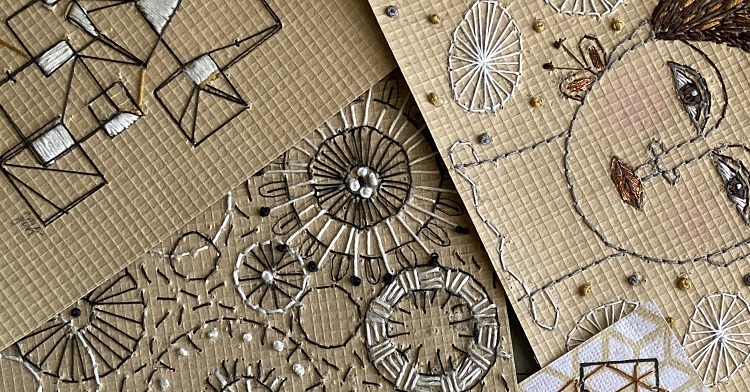
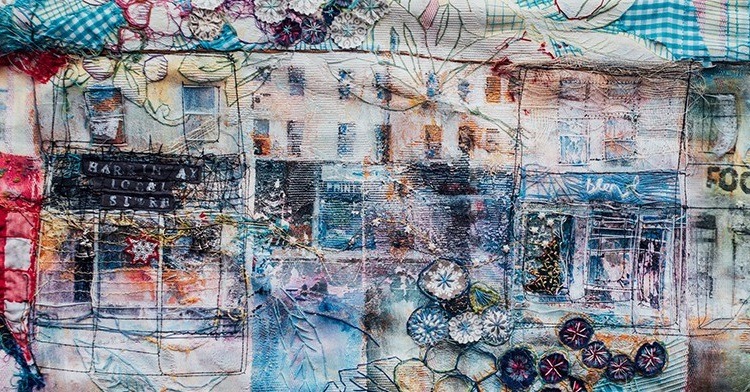
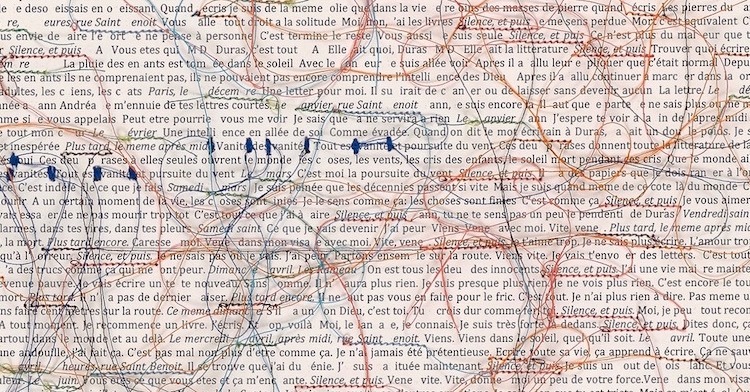
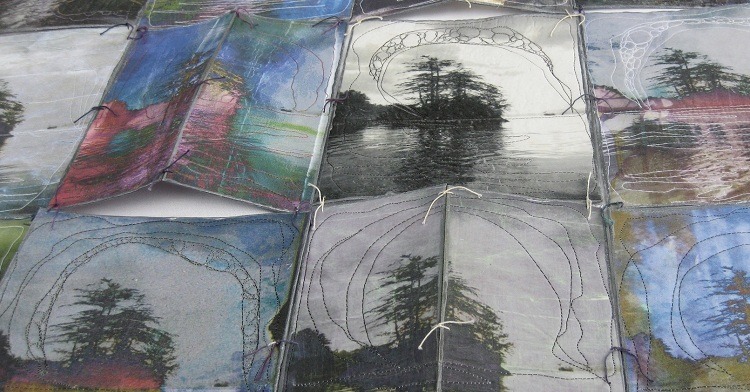
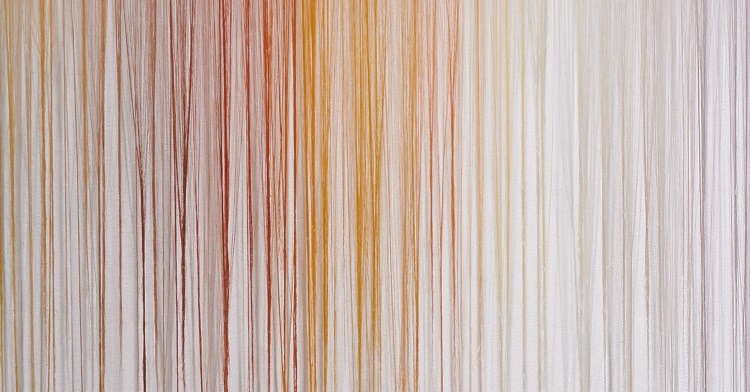
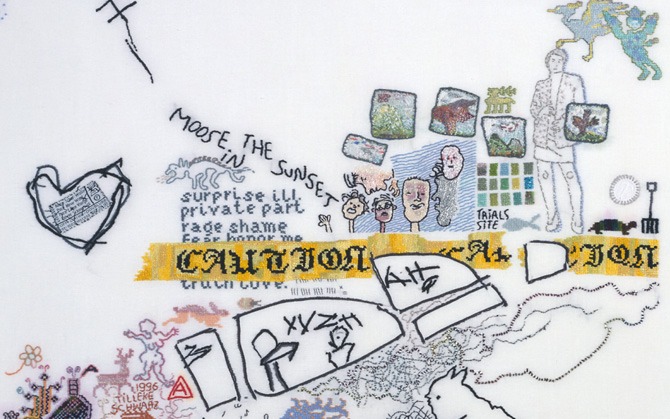
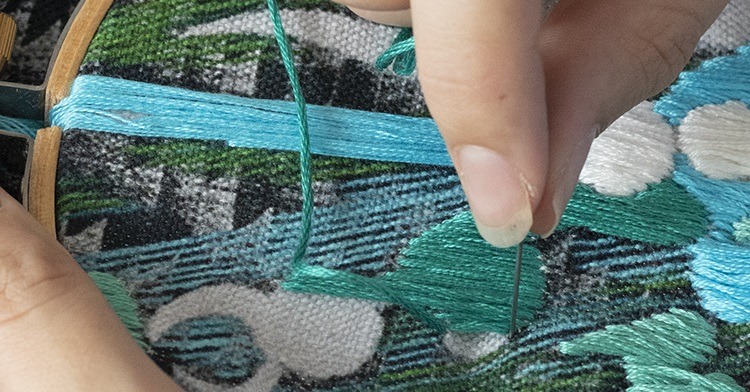
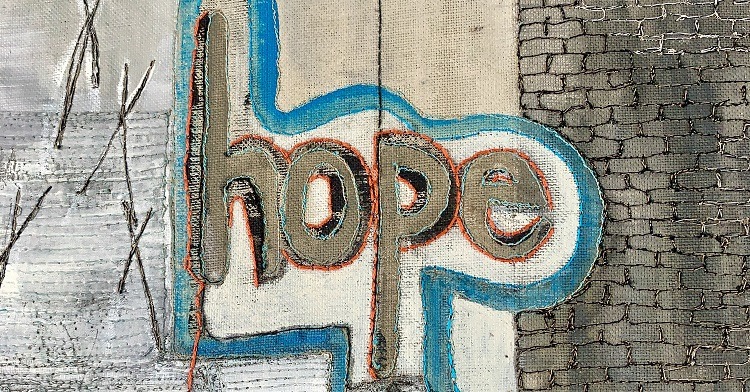
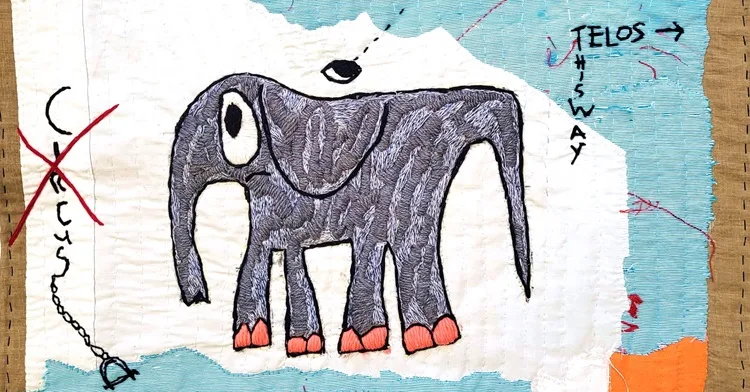
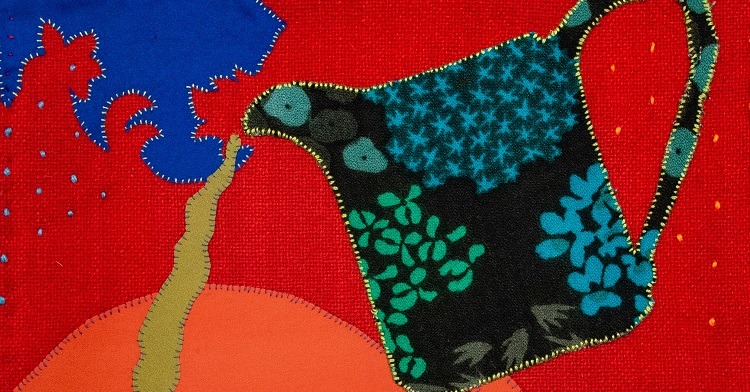
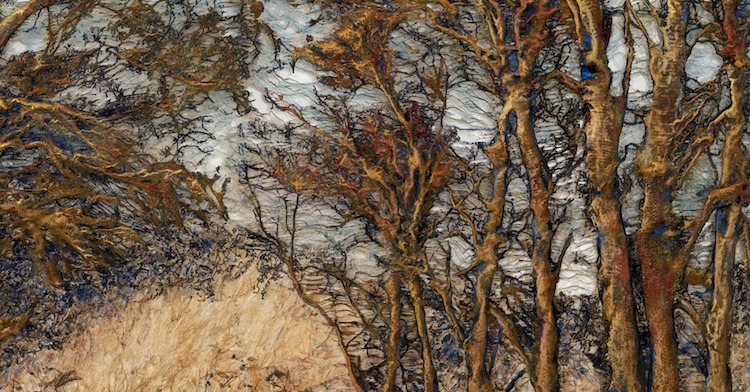
Comments